Top 10 Most Popular Pets In The World
 |
| Top 10 most popular pets in the world |
Pets are part of our life. And indeed, in countries like the United States, 68% of households have at least one pet. Adopting (or buying) a pet is a very important step in our life, since animals are not toys, but beings that become our responsibility.
Companion animals, pets or domestic animals are organisms of the animal kingdom that have been domesticated in order to provide company to people, that is, not with the aim of bringing economic or nutritional benefits, but for the enjoyment of the caregiver.
The domestication of animals was established, according to historical studies, around 9000 BC., during the Neolithic revolution, when humans discovered that we needed to establish links with nature and the animal kingdom. The rest is history.
What are the most popular pets?
Pet are not merely an American phenomenon. Also, the data offered here demonstrates that just because pets are treated differently in other cultures, doesn’t mean they’re not loved.
It’s all so complicated few overnight simple solutions.
So, in Mexico, as one example, dogs and cats are not typically spay/neutered for reasons intertwined with both culture and religion. Pets is some families are considered disposable and are treated poorly by any standard, and by others valued members of the family, and family is cherished in Mexico – though cats often are still outdoors only, and overall pet care is limited on resources and education regarding pet care.
In some European nations, take Switzerland, there is little spay/neuter, yet the pet over-population doesn’t exist. The number of homeless animals is negligible.
In America, most people have a pet. There are more pets than children. Half of all dogs sleep in the same bed as a family member. About 90 percent (some polls indicate over 90 percent) of pet owners consider their pets members of the family. Yet, according to the ASPCA approximately 2.7 million animals are euthanized at shelters (1.2 million dogs and 1.4 million cats).
According to a GfK SE survey (Gesellschaft für Konsumforschung orSociety for Consumer Research) published in Petfood Industry.com,
Globally, 57 percent of consumers own pets (according to more than 27,000 online consumers whom GfK surveyed in 22 countries).
Dogs are the most popular pet globally, owned by 33 percent of respondents, with cats next at 23 percent. The listing continues: Fish (12 percent), birds (six percent), and other pet types (six percent).
Argentina (82 percent), Mexico (81 percent) and Brazil (76 percent) have the highest rates of overall pet ownership among the 22 countries surveyed, with dogs being the most popular pet in all three nations. The countries included are Argentina, Australia, Belgium, Brazil, Canada, China, Czech Republic, France, Germany, Hong Kong, Italy, Japan, Mexico, Netherlands, Poland, Russia, South Korea, Spain, Sweden, Turkey, UK and USA.
The US ranks fifth for pet ownership and third when it comes to owning cats. Almost three-quarters (70 percent) of US consumers have at least one pet, with 50 percent owning dogs and 39 percent cats.
According to Live Science (and others), 2013, the most popular pets in the world:
- 142 million freshwater fish
- 88.3 million cats
- 74.8 million dogs
- 16 million birds
- 24.3 million small animals
- 13.8 million horses
- 13.4 million reptiles
- 9.6 million saltwater fish
Some of these seemingly conflicting numbers can be explained by slicing and dicing. For example, there are likely more households with dogs than cats, but more cats per home.
List of top 10 most popular pets in the world
10. Ferret
9. Iguana
8. Snakes
7. Birds
6. Guinea pig
5. Mouse
4. Freshwater fish
3. Hamster
2. Cat
1. Dog
Whar are the most popular pets in the world?
10. Ferret
 |
| Photo: Katyvet |
The ferret (Mustela furo) is a domestic species of small mustelid. The only domesticated species in Mustelidae, it is thought to be a descendant of the European polecat, a mammal belonging to the same genus as the weasel, Mustela. Their fur is typically brown, black, white, or mixed. They have an average length of 51 cm (20 in), including a 13 cm (5.1 in) tail, weigh about between 0.7 and 2.0 kg (1.5 and 4.4 lb), and have a natural lifespan of 7 to 10 years. Ferrets are sexually dimorphic predators, with males being substantially larger than females.
The history of the ferret's domestication is uncertain, like that of most other domestic animals, but it is likely that they have been domesticated for at least 2,500 years. They are still used for hunting rabbits in some parts of the world, but increasingly they are kept only as pets.
Being so closely related to polecats, ferrets easily hybridize with them, and this has occasionally resulted in feral colonies of polecat–ferret hybrids that have caused damage to native fauna, especially in New Zealand. As a result, New Zealand and some other parts of the world have imposed restrictions on the keeping of ferrets.
Several other mustelids are also known as ferrets, such as the black-footed ferret, an endangered species native to North America.
Ferrets can subsist on a diet of water and meat similar to that given the domestic cat. Easily bred in captivity, females bear two litters of six or seven young each year. Because common ferrets are subject to foot rot, their cages must be kept scrupulously clean.
9. Iguana
 |
| Photo: National Zoo |
Iguana, any of eight genera and roughly 30 species of the larger members of the lizard family Iguanidae. The name iguana usually refers only to the members of the subfamily Iguaninae. The best-known species is the common, or green, iguana (Iguana iguana), which occurs from Mexico southward to Brazil. Males of this species reach a maximum length of over 2 metres (6.6 feet) and 6 kg (13.2 pounds). It is often seen basking in the sun on the branches of trees overhanging water, into which it will plunge if disturbed. The common iguana is green with dark bands that form rings on the tail; females are grayish green and about half the weight of males. Iguanas also possess atrophied venom glands that produce a weak harmless venom.
Food of the common iguana consists largely of leaves, buds, flowers, and fruits of fig trees (genus Ficus), although many other trees are also fed upon. Whereas this lizard has a well-developed digestive system housing bacteria that ferment plant material, it also eats invertebrates when young and has been known to eat small birds and mammals.
 Can dogs and cats get COVID-19? Can dogs and cats get COVID-19? Can my pet and animal get the COVID-19 virus: While coronavirus disease (COVID-19) mostly spreads from person to person, it can also spread from people ... |
8. Snakes
 |
| Photo: Nerdynaut |
There are approximately 2,500 different species of snakes. Several species are commonly kept as pets including king snakes, rat snakes, garter snakes, corn snakes, various pythons (particularly ball pythons), and various boa constrictors (especially the common boa constrictor). The needs of one species may differ from those of another, so be sure to discuss specific questions with a knowledgeable herpetologist (someone who studies reptiles and amphibians) or a veterinarian familiar with reptiles. The ball python will be used for this discussion, as it is one of the most commonly kept pet snakes. Most of the information concerning the ball python is applicable to other terrestrial snake species.
Most snakes sold as pets are easy to handle and are usually not aggressive. Although certain species of snakes commonly kept by serious reptile collectors have a naturally aggressive nature, these species tend not to show up often in the general pet trade, so they are not typically available in pet stores.
Some snakes, especially the ball python, may not eat for weeks to months after the stress of going to a new home and new environment. Lack of appetite can be a normal reaction to stress, but if prolonged, it may be a sign of a more serious problem that requires prompt veterinary attention.
7. Birds
 |
| Photo: Getty Images |
Feathered pets like parrots can be fascinating additions to the family. Recent estimates say that over 5 million households in the United States have pet birds. Bird owners should be aware that although their pets might be highly intelligent and fun companions, they can sometimes carry germs that can make people sick.
Although rare, germs from birds can cause a variety of illnesses in people, ranging from minor skin infections to serious illnesses. One of the best ways you can protect yourself from getting sick is to thoroughly wash your hands with running water and soap after you touch birds, their droppings, or items in their cages.
How to house pet birds
- Provide a safe, sturdy enclosure or cage for your bird. Keep pet birds from interacting with all wild animals and insects such as mosquitoes. These animals and insects can carry diseases that can be spread to your pet birds.
- Do not allow your birds to fly or roam around the house without supervision. They could get accidentally trapped or hurt.
- Avoid housing pet birds in areas where food or drink is prepared, served, or stored, such as kitchens or dining rooms.
- Closely supervise any interaction of your birds with children or other pets to reduce the chance of injuries.
6. Guinea pig
 |
| Photo: The Spruce Pets |
Guinea pigs, also known as cavies, are friendly and inquisitive pets. However, they need commitment and regular attention to ensure they stay healthy and happy. Guinea pigs are sociable pocket pets, are easily tamed, and can live for up to ten years. Their friendly nature makes them fantastic pets. They’re also very intelligent.
Guinea pigs are happiest when kept with other guinea pigs. However, if you do keep males and females together, make sure both animals are the same sex or at least one gender has been desexed.
Guinea pigs are herbivores. To keep them healthy and happy, they need:
- a constant source of good quality fresh grass or grass hay, such as Meadow, Oaten, Pasture, Ryegrass, Timothy or Wheaten hays. This is important for wearing down their continuously growing teeth.
- fresh, leafy green vegetables and herbs every day, such as broccoli, cabbage (in small amounts), celery, endives, Brussel sprouts, bok choy and other Asian greens, and dark-leafed lettuce varieties; and herbs such as basil, coriander, dandelion, dill, mint and parsley. Remember that carrot tops should only be given as an occasional treat.
- small quantities of high-quality guinea pig pellets. These should have a minimum fibre content of 16 per cent.
- a daily source of vitamin C, such as small amounts of citrus and kiwi fruits
- a constant source of clean, fresh water
Guinea pigs need lots of space to exercise – the more the better. She should exercise every day in a large, grassy area, free and safe from predators.
You could also provide your guinea pig with a chewing log made of untreated wood to wear down her teeth, and overturned boxes to hide in.
 Top 10 Most Beautiful Animals in the World Top 10 Most Beautiful Animals in the World All animals living on earth are beautiful. The diversity on our planet is practically endless with different sizes, shapes, characteristics and colours. Here is 10 ... |
5. Mouse
 |
| Photo: Media Storehouse |
Mice are very sociable, so enjoy being kept with other mice. However, if you do keep males and females together, make sure both animals are the same sex or at least one gender has been desexed. Paired females tend to get on better than paired males.
Mice are omnivores, so eat both animal and plant materials. They need a protein level of at least 16 per cent and a fat content of four to five per cent. To ensure your mouse stays happy and healthy, you should feed him:
- fresh fruit and vegetables, such as apples (without seeds), bananas, beans, berries, bok choy and other Asian greens, broccoli, Brussel sprouts, carrots, celery, citrus fruits, endive, fresh corn, melon, parsley, peas, pears, stone fruits and tomatoes
- a small amount of good quality commercial rat pellets or rat cubes
- access to clean, fresh water at all times. A bottle-type drinker works well, as the water won’t get dirty.
Do not give your mouse a diet based on grains or seed mixes. Bread, breakfast cereal, biscuits, cereals, cooked pasta, cooked rice, seeds and sweets should be considered occasional treats. Never feed your mouse chips, chocolate, garlic, lemons, lollies, onions, oranges, raw meat, peanuts or sugar.
Mice are very intelligent, so will enjoy playing with toys. Try putting treats into an empty kitchen or toilet roll tube, and stuffing both ends with paper for him. You can also give him a hammock to swing in.
4. Freshwater fish
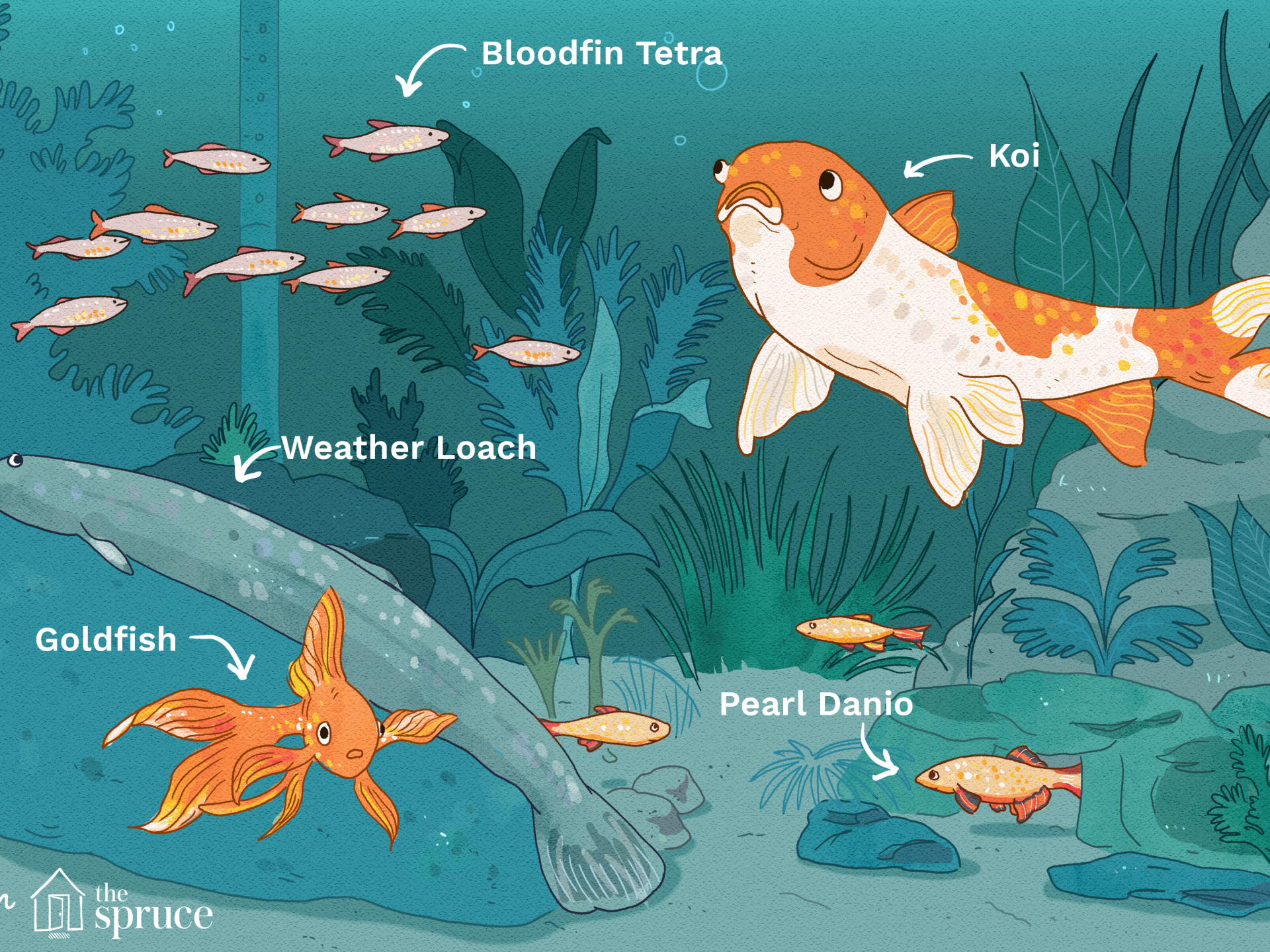 |
| Photo: The Spruce |
Keeping an aquarium in your home adds numerous benefits to your health, like reducing stress and lowering blood pressure. Freshwater tanks tend to be easier to care for than saltwater tanks, and its critters are more forgiving to mistakes made by new owners. Freshwater fish has its own beautiful selection of colorful and unique species that make your aquarium thrive with life.
Freshwater fish are the fourth most common choice as a pet. And it is that in addition to providing company, fish and aquariums provide relaxation that is highly valued by certain people. They are cheap to buy, don’t need a lot of space, and feeding them is inexpensive too.
The golden fish, with a scientific name Carassius auratus, is arguably the most popular pet fish and was first domesticated in China more than 1,000 years ago. It is a fish that can live up to 30 years, making it one of the longest-lived pets that one can have.
3. Hamster
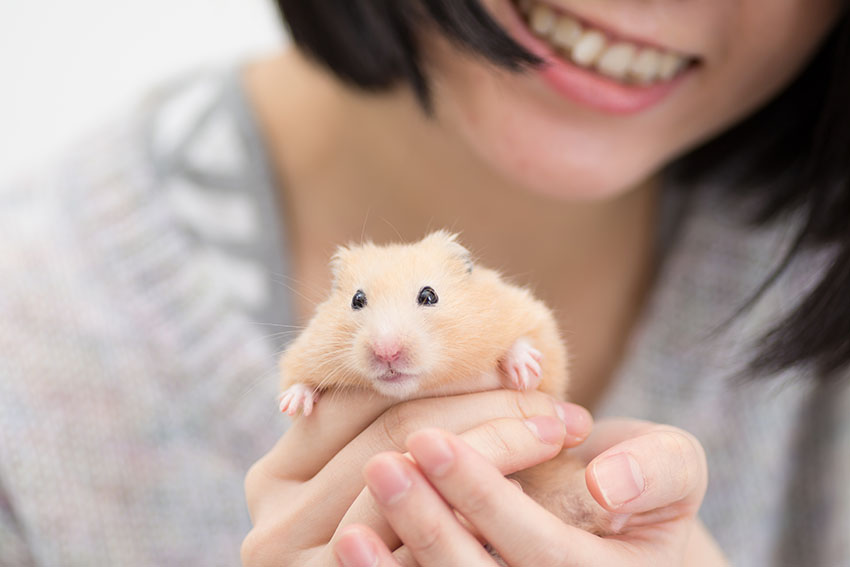 |
| Photo: Omlet |
Hamsters are rodents (order Rodentia) belonging to the subfamily Cricetinae, which contains 19 species classified in seven genera. They have become established as popular small pets. The best-known species of hamster is the golden or Syrian hamster (Mesocricetus auratus), which is the type most commonly kept as pets. Other hamster species commonly kept as pets are the three species of dwarf hamster, Campbell's dwarf hamster (Phodopus campbelli), the winter white dwarf hamster (Phodopus sungorus) and the Roborovski hamster (Phodopus roborovskii).
Hamsters are more crepuscular than nocturnal and, in the wild, remain underground during the day to avoid being caught by predators. They feed primarily on seeds, fruits, and vegetation, and will occasionally eat burrowing insects. Physically, they are stout-bodied with distinguishing features that include elongated cheek pouches extending to their shoulders, which they use to carry food back to their burrows, as well as a short tail and fur-covered feet.
Although the Syrian hamster or golden hamster (Mesocricetus auratus) was first described scientifically by George Robert Waterhouse in 1839, researchers were not able to successfully breed and domesticate hamsters until 1939. The entire laboratory and pet populations of Syrian hamsters appear to be descendants of a single brother–sister pairing. These littermates were captured and imported in 1930 from Aleppo in Syria by Israel Aharoni, a zoologist of the University of Jerusalem. In Jerusalem, the hamsters bred very successfully. Years later, animals of this original breeding colony were exported to the United States, where Syrian hamsters became a common pet and laboratory animal. Comparative studies of domestic and wild Syrian hamsters have shown reduced genetic variability in the domestic strain. However, the differences in behavioral, chronobiological, morphometrical, hematological, and biochemical parameters are relatively small and fall into the expected range of interstrain variations in other laboratory animals.
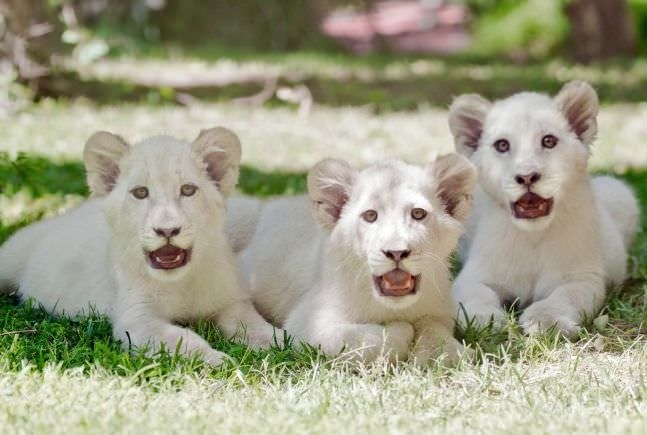 Top 10 Most Expensive Animals In The World Today Top 10 Most Expensive Animals In The World Today Animals are human’s friends so many of us are ready to spend a large amount of money buying animals. ... |
2. Cat
 |
| Photo: Live Science |
Cats make affectionate and playful pets and thrive best when they're cared for considering their dietary, environmental and health and welfare needs. Cats will need space to be active, with regular interaction with people and other animals (cats don't really like to be left alone for long periods during the day). They will also need access to clean water, meat-based cat food and regular grooming as well as private access to a litter tray which should ideally be replaced once a week.
- Cats have highly developed senses. Cats can detect higher frequencies of sound than dogs or humans. They have an excellent sense of smell, superior to humans and they can see better than us in dark and dim light!
- Cats are expert hunters. Cats hunt alone - in the wild they'll spend 6-8 hours a day hunting. They can hear the high pitched frequencies used by small rodents and their whiskers or 'vibrissae', are highly sensitive to vibrations, helping them to detect prey.
- Cats are agile. Cats have powerful, tightly controlled muscles and fast reflexes that allow them to move quickly and gracefully. They are skilled at running, jumping, climbing, and stealthily stalking prey.
- Cats use a range of methods to communicate. Communication sounds include purrs, 'meows', trills, chirrups, growls, yowls, and hisses. They also communicate visually using different body postures as well as visual markers such as scratch marks or the deposition of faeces.
- Cats are independent. Survival is a solitary affair for cats; they are self-reliant for food, shelter, grooming and territory defence. They can be social but prefer to choose their own companions.
- Cats are territorial. A cat's territory is an area that is defended, aggressively if required, against other cats. They use a range of methods to mark their territory, including scratching, spraying urine and depositing faeces. Help keep your cat safe outside.
- Cats are meat eaters. Meat is an important part of a cat's diet. Eating meat is important for cats; they cannot survive without the nutrients found in animal-derived materials.
1. Dog
 |
| Photo: Pinterest |
The mascot, at least by numbers, par excellence. Today, there are more than 471 million dogs. Scientific name Canis lupus familiaris, the domestic dog is a carnivorous mammal of the canidae family. Its origin dates back to about 15,000 years ago, coming from a domestication of the wolf, and, today, there are 343 different breeds of dogs. They are faithful, intelligent, friendly, social, and loving. They have everything to be the most popular pets. With which you stay?
Research has proven that the loyalty of a dog to his master is second to none. They are generally affectionate with kids and their owners. Some dogs are better with kids and can be trained better than others. Dogs will know when the master is low and will playfully try to distract them from the surly mood. Dogs are sturdy animals that do not require a lot of care. They are to be fed on a regular basis though, but it is more out of habit than out of need for food.
 Top 10 Most Poisonous Fruits In The World Top 10 Most Poisonous Fruits In The World Thinking of fruits, have you ever met some that look juicy but can't eat. Check out right below the 10 most poisonous fruits in the ... |
 Top 10 Most Popular Fruits In The World Top 10 Most Popular Fruits In The World Fresh fruits make a healthy, delicious snack that nearly everyone can include in their daily diet. Which are the 10 most popular fruits in the ... |
 Top 10 Most Dangerous Animals in the World Top 10 Most Dangerous Animals in the World Although Hollywood films suggest our greatest threats include sharks and rampaging apes, the deadliest creatures are often much smaller – and more likely to kill ... |
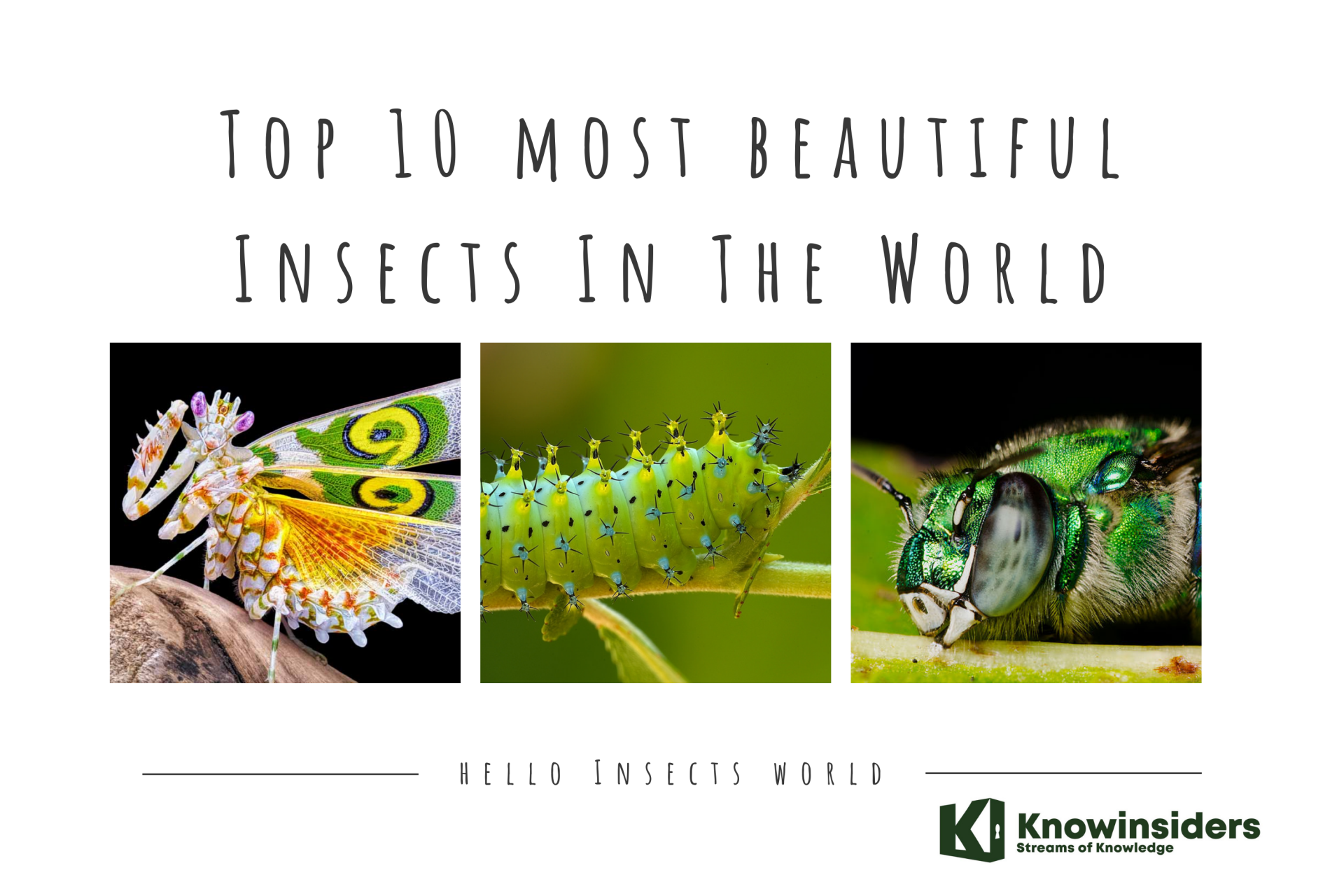 Top 10 Most Beautiful Insects In The World Top 10 Most Beautiful Insects In The World There are more than millions of species that exist in this world. Some are bizarre, some are gorgeous. Check out the 10 most beautiful insects ... |


























